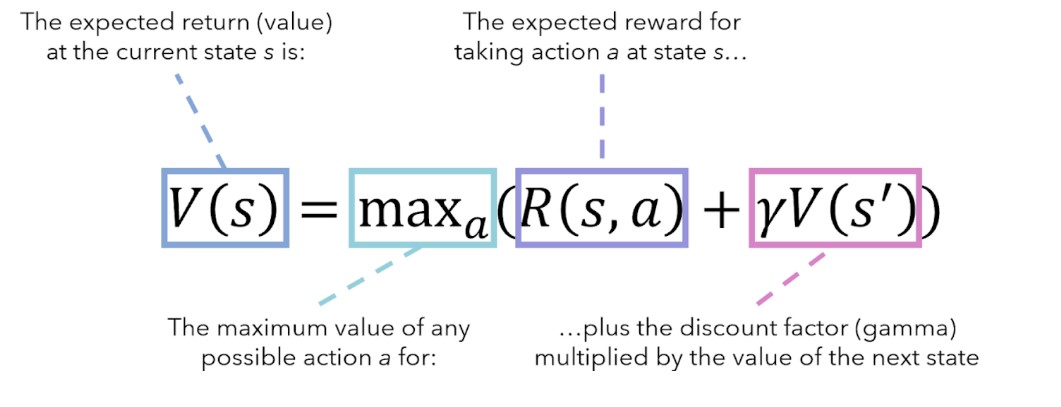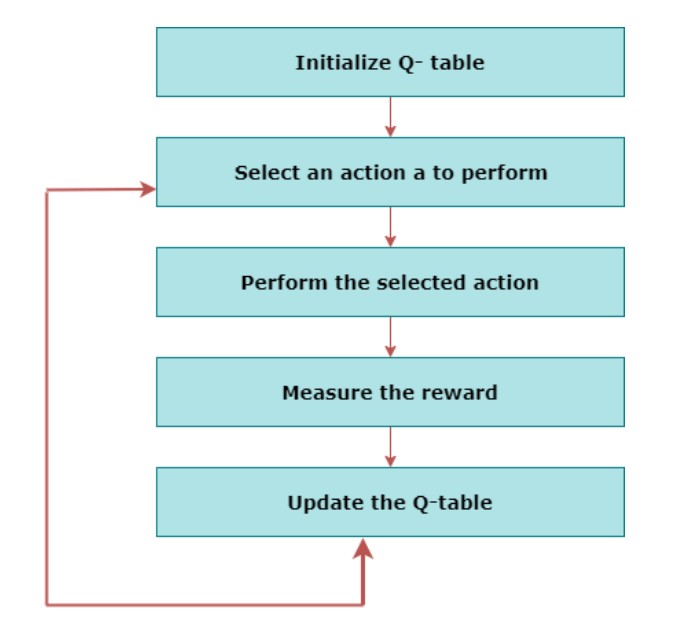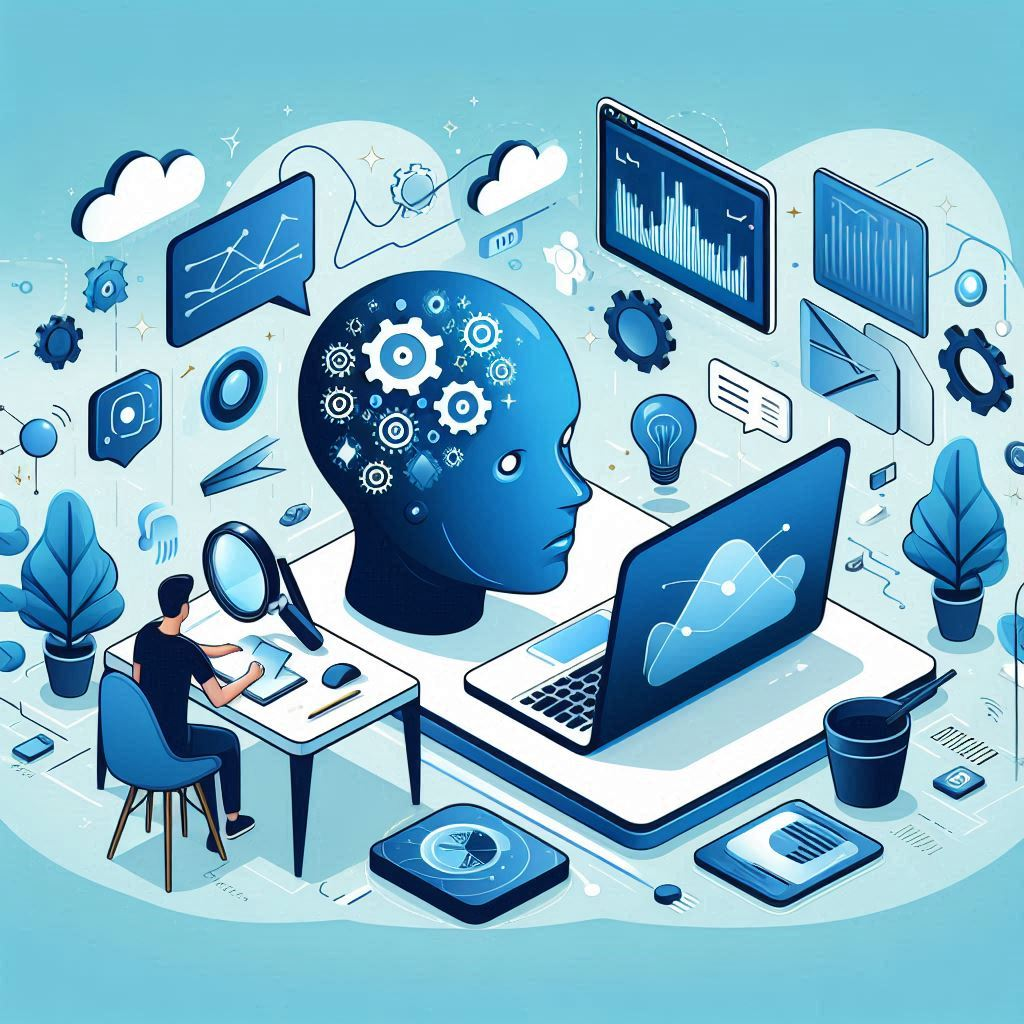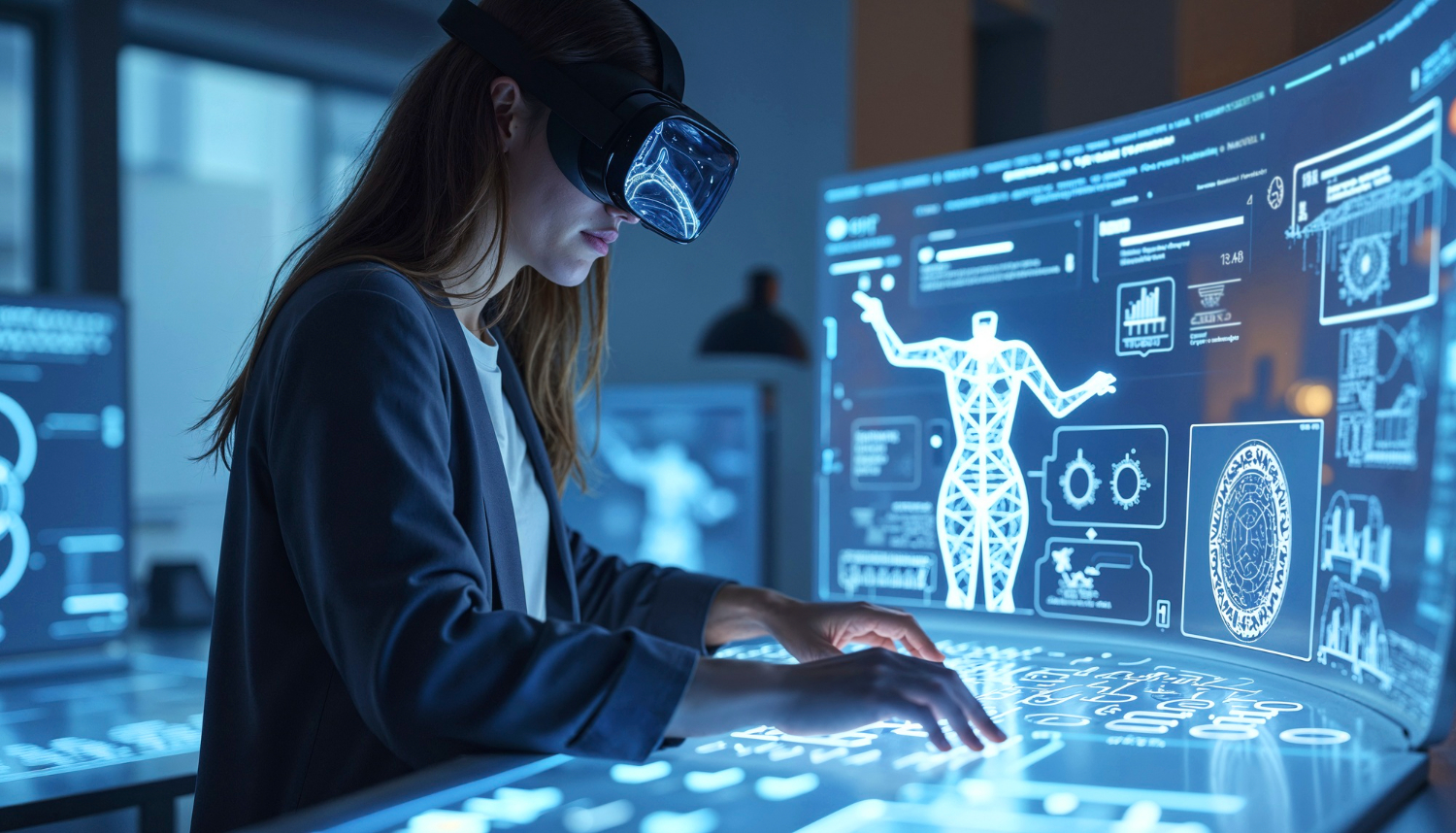Introduction to Reinforcement Learning
Reinforcement learning (RL) is a key area of artificial intelligence. It focuses on training agents to make decisions through interactions with their environment. Unlike supervised learning, where models learn from labelled data, RL uses a trial-and-error approach to discover the best actions. The agent’s main goal is to maximise rewards over time, which makes RL valuable in complex environments where outcomes are not immediately clear.
The reinforcement learning problem revolves around how an agent moves through different states by taking actions that affect its surroundings. The agent gets feedback from the environment through rewards or penalties, known as the reward function. The challenge is to develop strategies that maximise long-term rewards. This involves finding a balance between exploring new actions and exploiting known ones that give high rewards.
Many real-world scenarios apply reinforcement learning algorithms. They help solve problems in fields like autonomous driving, robotics, financial modelling, and healthcare. These algorithms are designed to handle situations where making a series of decisions can lead to complex and often surprising outcomes. By addressing the RL problem, these algorithms create intelligent systems that can adapt, learn, and improve behaviour over time, showing the power and flexibility of RL in modern AI.
Core Concepts in Reinforcement Learning
Markov Decision Process (MDP)
A Markov Decision Process (MDP) is a framework used to model decision-making where outcomes depend on both chance and the agent’s choices. MDPs are essential in RL because they provide a structured way to describe the environment in which an agent operates. MDPs are made up of states, actions, transition probabilities, and rewards.
-
States represent the different situations the agent can be in.
-
Actions are the choices available to the agent that affect the state.
-
Transition probabilities indicate the chance of moving from one state to another after an action.
Rewards are the gains or losses from moving between states, guiding the agent toward actions that offer the most benefit.
By modelling the environment as an MDP, RL problems can be approached systematically. This helps the agent learn optimal policies that maximise long-term rewards.
Read more: Symbolic AI vs Generative AI: How They Shape Technology
Bellman Equation
The Bellman equation is a crucial tool in RL. It calculates the value of different states or actions by estimating the expected cumulative reward an agent can achieve from that point onward. The equation is based on the idea that any optimal policy’s value function must follow a specific pattern, known as a recursive relationship.
The Bellman equation expresses the value of a state as the sum of the immediate reward from an action and the discounted value of the next state, accounting for all possible future actions. This approach helps the agent evaluate the long-term benefits of its actions, even in complex situations where outcomes are uncertain, as shown below.

In practice, the Bellman equation breaks down the RL problem into smaller parts. This makes it easier to calculate optimal strategies that maximise cumulative rewards, guiding the agent toward the best behaviour.
Methods and Techniques in Reinforcement Learning
Dynamic Programming
Dynamic programming (DP) is a method used in RL to solve MDPs by breaking down complex problems into simpler ones. DP requires a complete model of the environment, including transition probabilities and the reward function.
The main idea of DP is to use the Bellman equation repeatedly to update the value of each state until it reaches an optimal solution. This process helps the RL agent determine the best actions to take in each state.
However, dynamic programming can be computationally expensive and requires the entire state space to be known, which makes it less practical for large-scale or real-time applications.
Value Iteration
Value iteration is a key technique in value-based reinforcement learning and is one of the fundamental RL algorithms used to find optimal policies. It combines dynamic programming with an iterative approach to refine the value of states until they converge to an optimal solution.
In value iteration, the agent starts with an initial guess for the value function. It then repeatedly updates these values by selecting actions that maximise expected rewards. This method is effective when the state and action spaces are well-defined. The goal is to determine the optimal policy that guides the agent’s actions.
For instance, in a grid-world environment where an agent needs to reach a goal while avoiding obstacles, value iteration helps calculate the best path by considering the long-term rewards of each move. This process continues until the value function stabilises, ensuring that the agent’s policy is optimal.
Policy Iteration
Policy iteration is another important technique in policy-based reinforcement learning. It differs from value iteration in that it focuses directly on improving the policy rather than just refining the value function. Policy iteration alternates between two steps: policy evaluation and policy improvement.
-
Policy evaluation involves calculating the value function for a given policy. This represents the expected cumulative rewards for following that policy in every state.
-
Policy improvement then updates the policy by choosing actions that maximise the value function, leading to a new and better policy.
This cycle repeats until the policy converges to an optimal one, where no further improvements can be made.
Unlike value iteration, which works on value functions, policy iteration directly improves the policy. This makes it more suitable when the goal is to optimise specific actions rather than value estimates.
Read more: The Impact of Computer Vision on Real-Time Face Detection
Q-Learning
Q-learning is a popular model-free RL algorithm. It allows an agent to learn the value of taking specific actions in specific states without needing a model of the environment. Unlike dynamic programming and value iteration, which require knowledge of transition probabilities, Q-learning relies on direct interaction with the environment through trial and error. The following diagram shows the basic steps involved in Q-Learning:

The key concept in Q-learning is the Q-function. This function represents the expected cumulative reward for taking a particular action in a given state and following the optimal policy afterwards. The Q-function is updated using the Q-learning update rule:

In more complex environments, deep reinforcement learning can be used, where a neural network approximates the Q-function. This allows the agent to handle high-dimensional state spaces. This combination of Q-learning with neural networks is known as deep Q-learning. It has been successfully applied in various fields, such as game playing and robotic control.
A key aspect of Q-learning is balancing the exploration-exploitation trade-off. Exploration means trying new actions to discover their rewards, while exploitation involves choosing actions known to give high rewards. This balance is often managed using strategies like the epsilon-greedy method, where the agent occasionally explores random actions while mostly exploiting known high-reward actions.
For example, in a robotic navigation task, Q-learning would enable the robot to learn the best actions to take in different parts of its environment. The robot does this by interacting with the environment and updating its Q-function based on the feedback it receives. Over time, the robot develops an optimal policy for navigating the environment efficiently, even without a predefined model of that environment.
Types of Reinforcement Learning
Value-Based Reinforcement Learning
Value-based reinforcement learning focuses on optimising value functions. These functions estimate the expected cumulative reward an agent can achieve from a particular state or state-action pair. The goal is to find the optimal policy by evaluating and maximising these value functions.
A prime example of value-based RL is Q-learning. In Q-learning, the agent updates the Q-value (or action-value) for each state-action pair based on the rewards received from the environment. By focusing on value functions, value-based RL methods are effective in environments where the goal is to maximise long-term rewards by choosing the most valuable actions at each step.
Policy-Based Reinforcement Learning
Policy-based reinforcement learning directly optimises the policy, which is a mapping from states to actions, without needing to estimate value functions. The goal is to find the optimal policy that maximises long-term rewards by improving the policy itself rather than relying on value estimates.
One popular method in policy-based RL is the actor-critic approach. This method combines both policy-based and value-based strategies. The actor updates the policy based on feedback from the environment, while the critic evaluates the policy by estimating value functions. This combination allows the agent to efficiently explore the action spaces and optimise its decisions for long-term rewards. The actor-critic method balances the strengths of both value-based and policy-based methods, making it a powerful tool in reinforcement learning.

Model-Based Reinforcement Learning
Model-based reinforcement learning uses a model of the environment to predict the outcomes of actions and make decisions. This approach contrasts with model-free methods, where the agent learns purely from experience without knowledge of the environment’s dynamics.
In model-based RL, the agent uses the model to simulate possible future states and rewards. This allows it to plan and optimise its actions more effectively. This approach can lead to faster learning and better decision-making, especially in complex environments. However, the accuracy of the model is crucial, as inaccuracies can lead to suboptimal policies.
Applications of Reinforcement Learning in Industry
Reinforcement learning has broad applications across various industries. It significantly impacts how decisions are made, and processes are optimised. In robotics, RL trains robots to perform complex tasks, such as navigating environments or manipulating objects. The robots learn from interactions with the world, allowing them to adapt to new situations and improve their performance over time.
In finance, RL algorithms help optimise trading strategies by learning from market data. This enables more effective decision-making in dynamic financial markets. The ability to learn from historical data and adjust strategies in real time makes RL a valuable tool for managing investments and reducing risks.
In healthcare, deep reinforcement learning personalised treatment plans optimise resource allocation and improve patient outcomes. For example, RL agents can help manage chronic diseases by learning the most effective interventions based on patient data. This ultimately enhances the quality of care and reduces costs.
Read more: Deep Learning in Medical Computer Vision: How It Works
The adaptability and learning capabilities of RL make it a transformative technology, driving innovation and efficiency across diverse sectors.
What We Can Offer as TechnoLynx
At TechnoLynx, we specialise in providing advanced services that seamlessly integrate with RL. Our services include Computer Vision, Generative AI, and AR/VR/XR technologies. By using these capabilities, we empower organisations to harness the full potential of deep reinforcement learning and other RL techniques.
For instance, TechnoLynx can combine Computer Vision with RL to create intelligent systems for real-time object detection and autonomous navigation in industrial settings. Similarly, by integrating NLP with RL, we can develop more interactive and responsive customer service chatbots that continuously improve based on user interactions. In IoT edge computing, our services optimise device operations and energy management through RL-driven decision-making processes. These examples show how our consultancy and services can solve complex industry challenges, offering tailored solutions that enhance efficiency and innovation.
Conclusion
In this article, we explored the main concepts, methods, and types of reinforcement learning. We covered Markov Decision Processes, the Bellman equation, and various RL techniques like value iteration, policy iteration, and Q-learning. We also discussed the differences between value-based, policy-based, and model-based reinforcement learning.
Looking ahead, the future of RL holds exciting potential, especially in the development of RL algorithms that can learn from limited data and adapt to changing environments. However, challenges such as scalability and ethical considerations remain. As RL continues to evolve, it will play a crucial role in driving innovation across industries, from robotics to healthcare, paving the way for more intelligent and autonomous systems.
Continue reading: Generative AI is Driving Smarter Business Solutions
References
-
Guide, S. (2023, January 7). The Q in Q-learning: A Comprehensive Guide to this Powerful Reinforcement Learning Algorithm. udit. Retrieved September 1, 2024.
-
Javatpoint. (2023, October). Reinforcement Learning Tutorial. Javatpoint. Retrieved August, 2024.
-
Neptune.ai. (2023, August 25). Markov Decision Process in Reinforcement Learning: Everything You Need to Know. Neptune.ai. Retrieved September 2, 2024.
-
Singh, N. (2023, July 10). The Bellman Equation: Decoding Optimal Paths with State, Action, Reward, and Discount. Medium. Retrieved September 2, 2024.
-
Thorat, R. (2023, October 29). Actor-Critic method explained. A policy-gradient method, by Rohan Thorat. Medium. Retrieved September 2, 2024.













